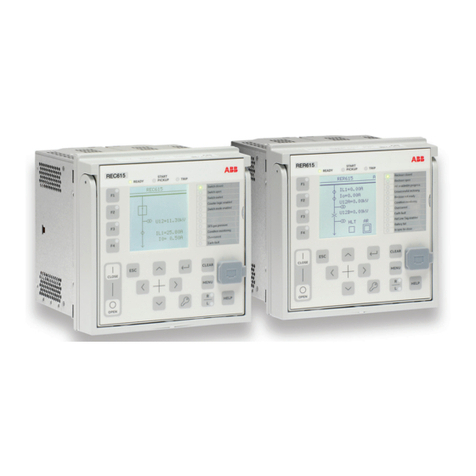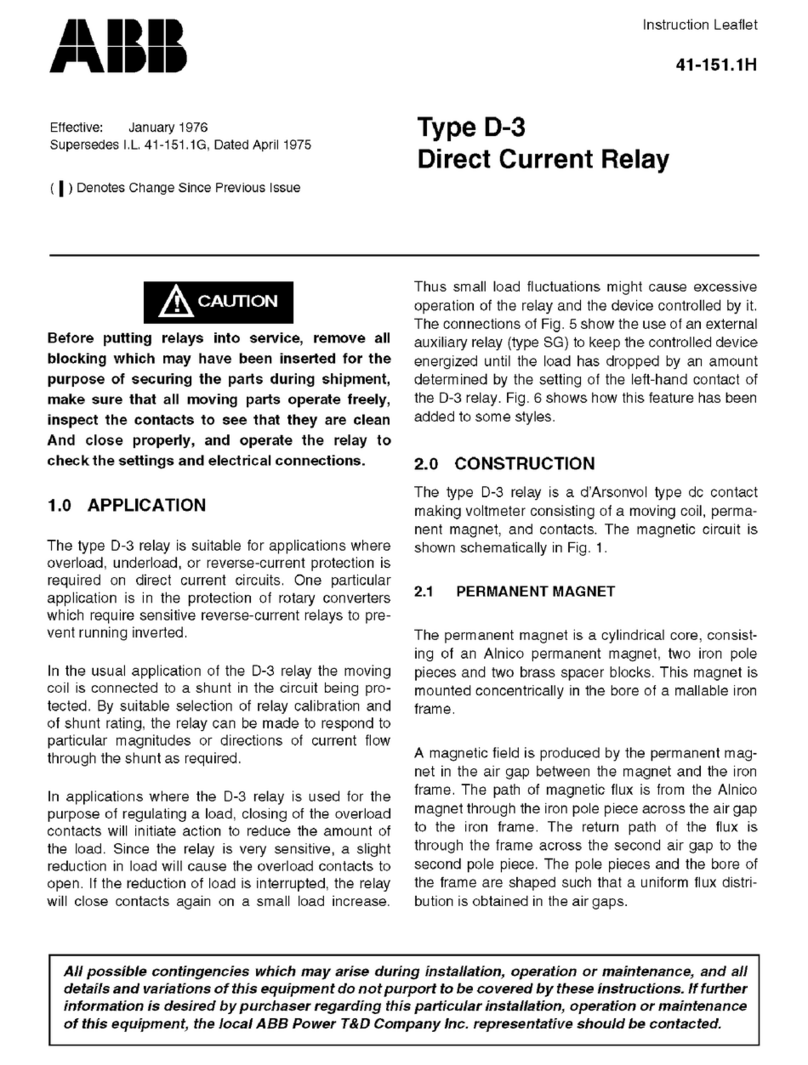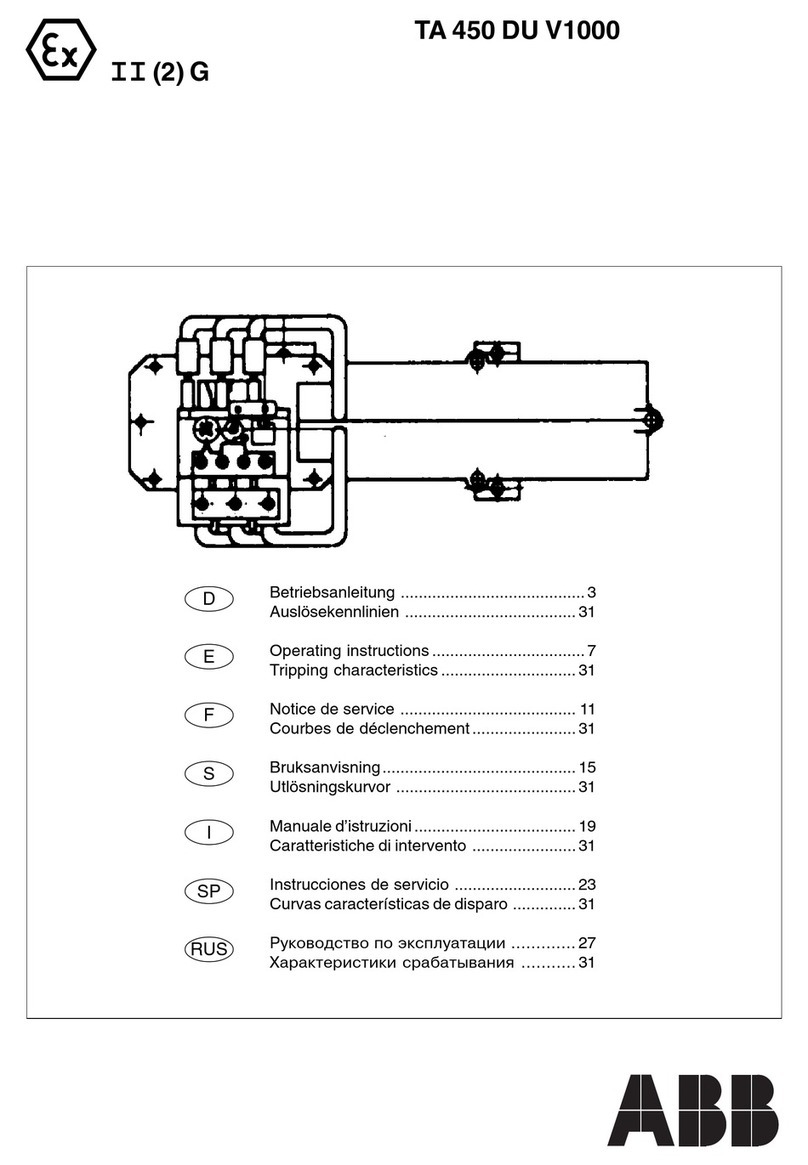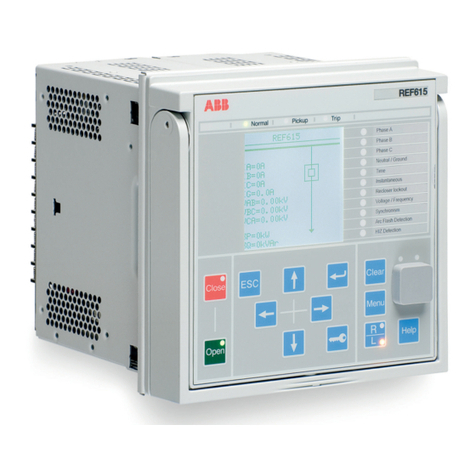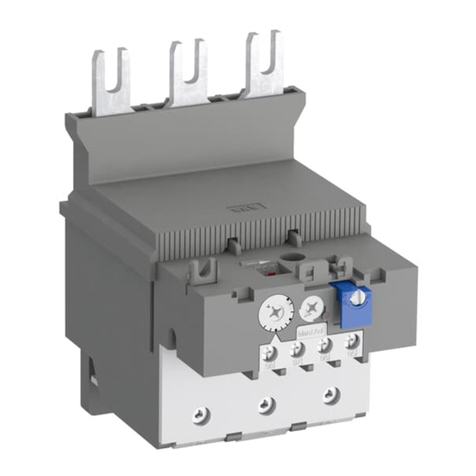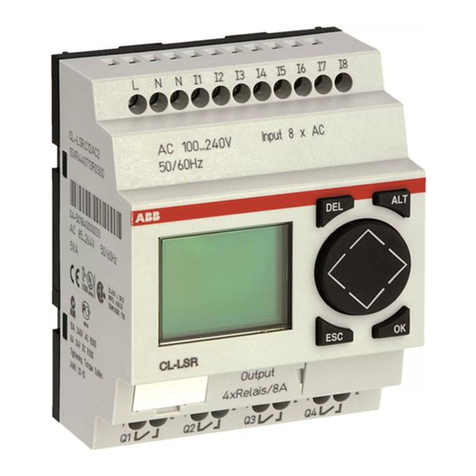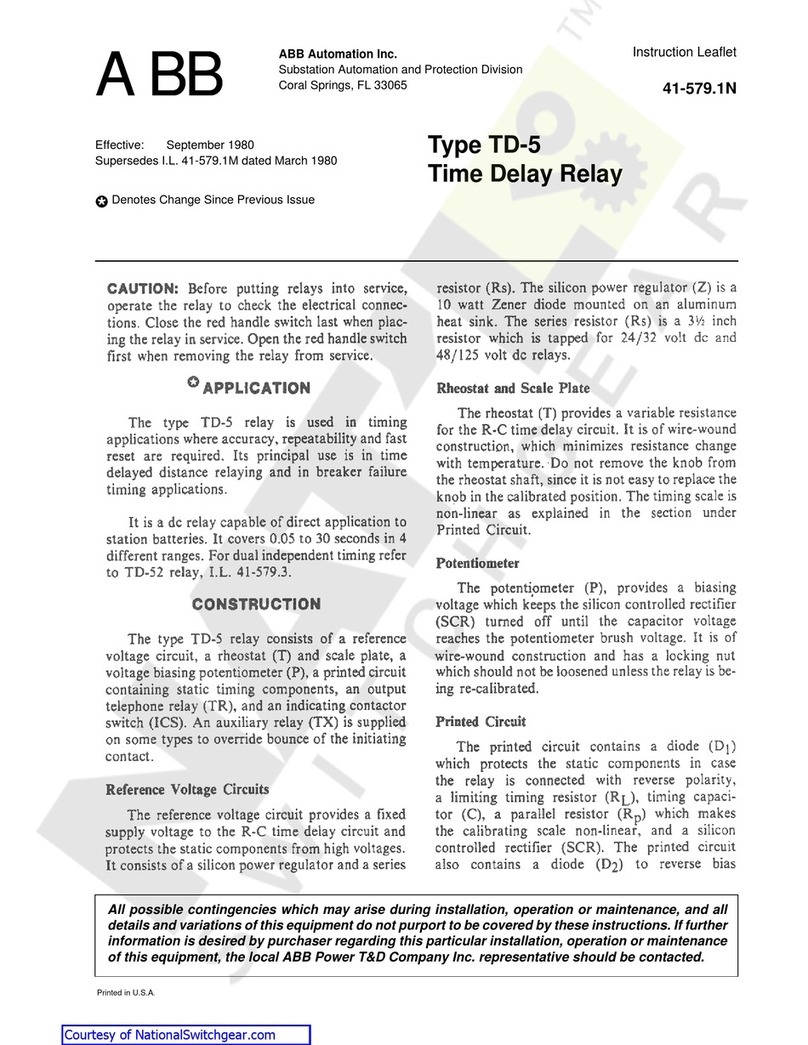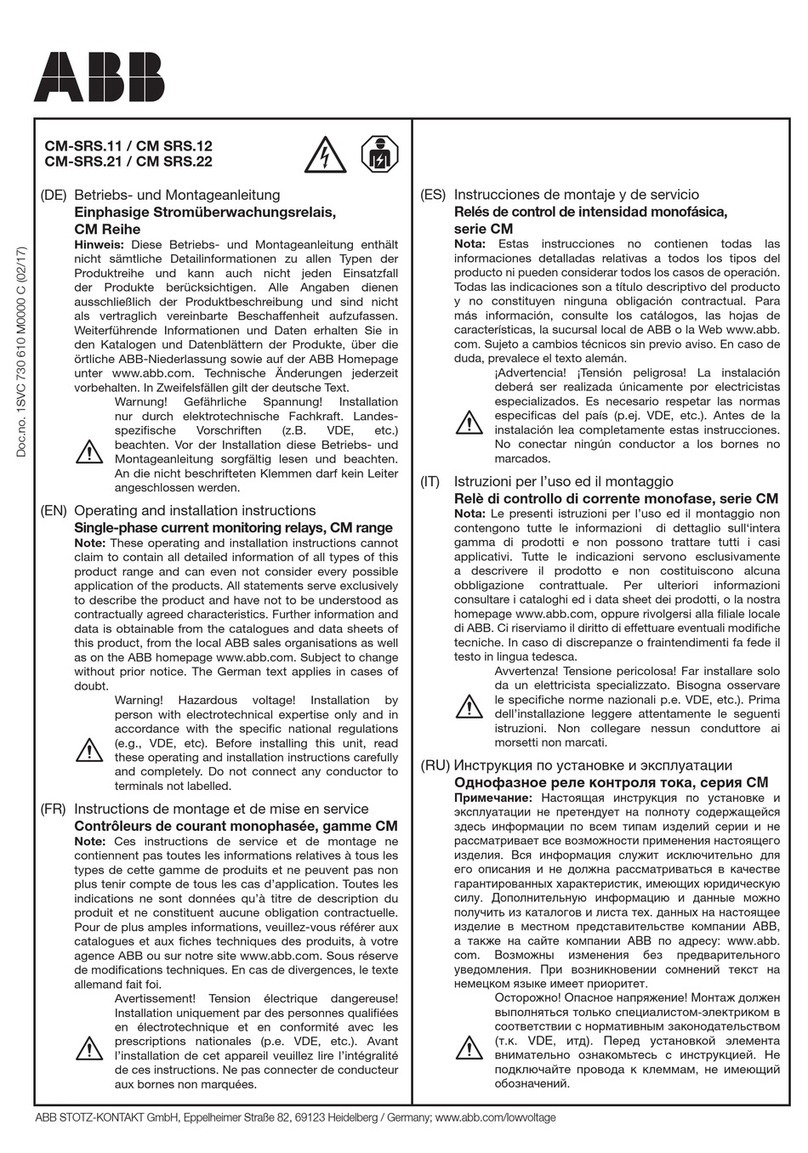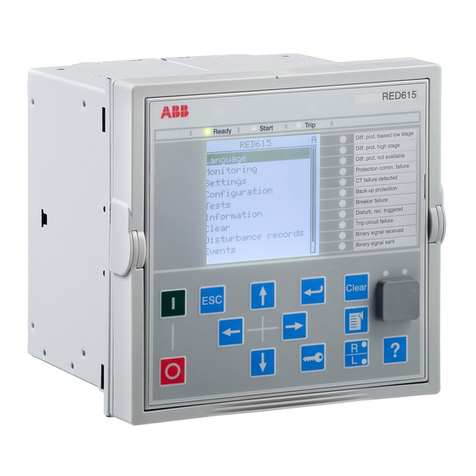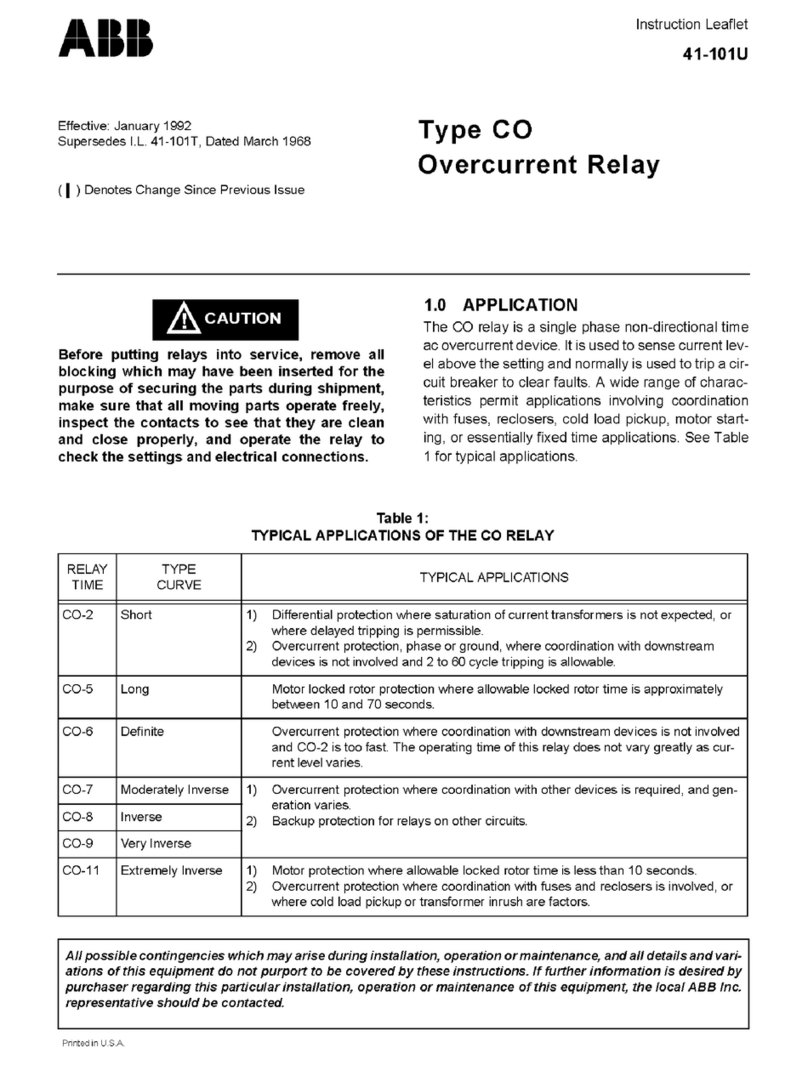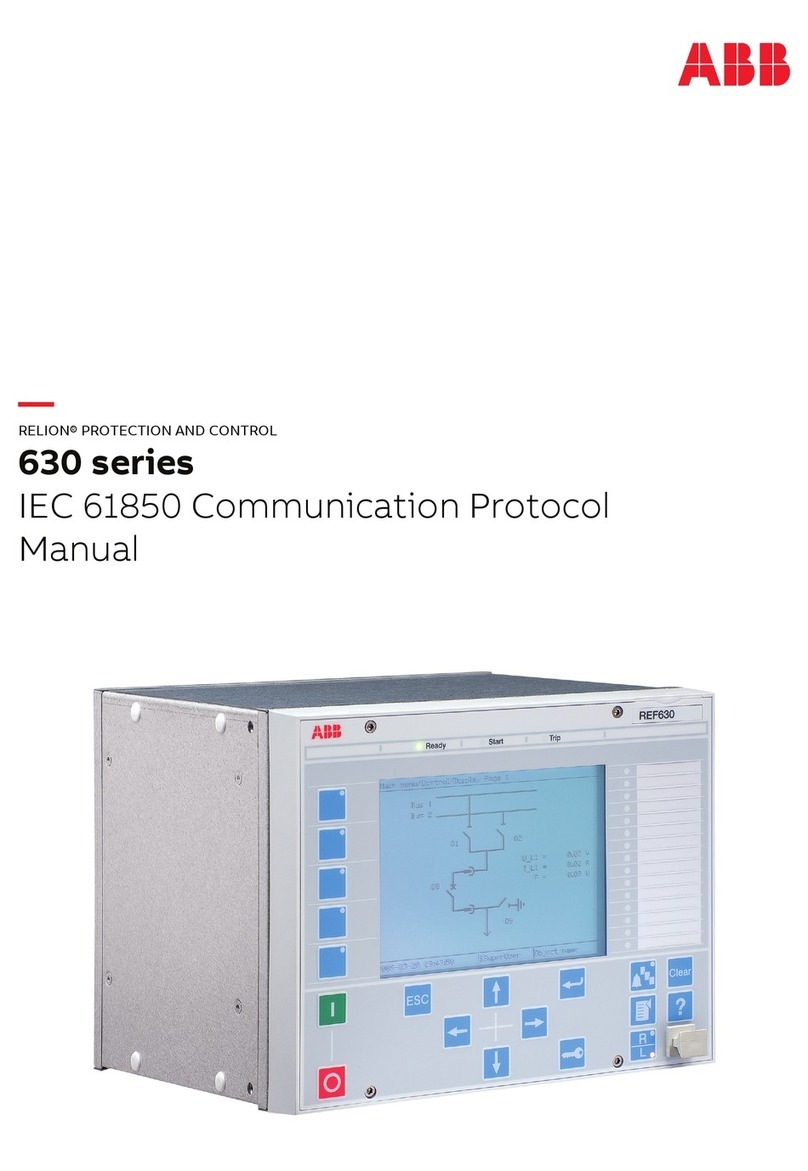
41-133S
2
Directional Overcurrent Ground Relays
Types IRP, IRC and IRD
electromagnet; a moving assembly; and a molded
bridge.
The frame serves as the mounting structure for the
magnetic core. The magnetic core which houses the
lower pin bearing is secured to the frame by a locking
nut. The bearing can be replaced, if necessary, with-
out having to remove the magnetic core from the
frame.
The electromagnet has two series-connected polariz-
ing coils mounted diametrically opposite one another;
two series-connected operating coils mounted dia-
metrically opposite one another; two magnetic
adjusting plugs; upper and lower adjusting plug clips,
and two locating pins. The locating pins are used to
accurately position the lower pin bearing, which is
mounted on the frame, with respect to the upper pin
bearing, which is threaded into the bridge. The elec-
tromagnet is secured to the frame by four mounting
screws.
The moving element assembly consists of a spiral
spring, contact carrying member, and an aluminum
cylinder assembled to a molded hub which holds the
shaft. The shaft has removable top and bottom jewel
bearings. The shaft rides between the bottom pin
bearing and the upper pin bearing with the cylinder
rotating in an air gap formed by the electromagnet
and the magnetic core.
The bridge is secured to the electromagnet and
frame by two mounting screws. In addition to holding
the upper pin bearing, the bridge is used for mount-
ing the adjustable stationary contact housing. The
stationary contact housing is held in position by a
spring type clamp. The spring adjuster is located on
the underside of the bridge and is attached to the
moving contact arm by a spiral spring. The spring
adjuster is also held in place by a spring type clamp.
With the contacts closed, the electrical connection is
made through the stationary contact housing clamp,
to the moving contact, through the spiral spring out to
the spring adjuster clamp.
2.3 AUXILIARY SWITCH (CS-1 OR TR-1)
The CS-1 switch is a small solenoid type dc switch. A
cylindrical plunger, with a silver disc mounted on its
lower end, moves in the core of the solenoid. As the
plunger travels upward, the disc bridges the silver
stationary contacts.
The TR-1 switch is a telephone relay. A tapped resis-
tor is used to enable one to use the auxiliary switch
on a 24, 48, 125 or 250 volt dc system connected per
Figure 26, page 40. The operation of the CS-1 or
TR-1 switch is controlled by the directional unit (D)
which in turn directionally controls the time-overcur-
rent unit (CO). When sufficient power flows in the
tripping direction, the auxiliary switch operates and
bridges the lag coil of the time-overcurrent unit (CO)
permitting this unit to operate.
2.4 INSTANTANEOUS OVERCURRENT UNIT (I)
The instantaneous overcurrent unit is similar in con-
struction to the directional unit. The time phase rela-
tionship of the two air gap fluxes necessary for the
development of torque, is achieved by means of a
capacitor connected in series with one pair of pole
windings.
The normally-closed contact of the directional unit is
connected across one pair of pole windings of the
instantaneous overcurrent unit as shown in the inter-
nal schematics. This arrangement short-circuits the
operating current around the pole windings, prevent-
ing the instantaneous overcurrent unit from develop-
ing torque. If the directional unit should pick up for a
fault, this short-circuit is removed, allowing the
instantaneous overcurrent contact to commence
closing almost simultaneously with the directional
contact for high speed operation. Total operating
time is shown in Figures 23 (page 38) and 24 (page
38).
2.5 INSTANTANEOUS OVERCURRENT UNIT
TRANSFORMER
This transformer is of the saturating type for limiting
the energy to the instantaneous overcurrent unit at
higher values of fault current and to reduce ct bur-
den. The primary winding is tapped and these taps
are brought out to a tap block for ease in changing
the pick-up of the instantaneous overcurrent unit.
The use of a tapped transformer provides approxi-
mately the same energy level at a given multiple of
pickup current for any tap setting, resulting in one
time curve throughout the range of the relay.
Across the secondary is connected a non-linear
resistor known as a varistor. The effect of the varistor
is to reduce the voltage peaks applied to the overcur-
rent unit and phase shifting capacitor.

